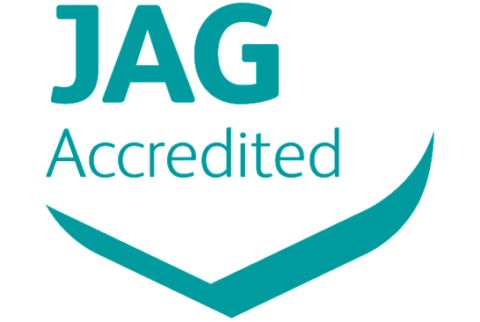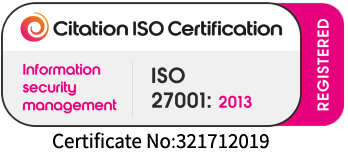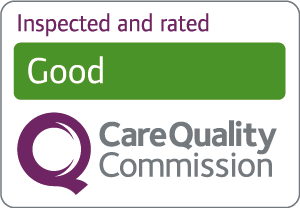
The Rugby League World Cup promises to be a fantastic spectacle, including men’s and women’s games as well as matches for physically disabled players. As you would expect, rugby is an extremely high energy and high impact sport, with a risk of injury to all parts of the body, particularly the shoulder. In this article, New Victoria Hospital’s Consultant Orthopaedic Upper Limb Surgeon, Mr Nashat Siddiqui, talks about typical shoulder injuries obtained on the field, how they are treated, and what you can do to prevent them.
The shoulder - a complicated joint
The shoulder is a complex joint, allowing a great range of movement. It comprises:
- a very mobile ball-and-socket joint
- a strong and stable joint between the collarbone and shoulder blade called the acromioclavicular joint or ACJ
- a very mobile shoulder blade
- lots of muscles and ligaments holding everything together whilst still allowing movement
Any of these structures can be injured; fractures are common along with breaks of the bones. It can be difficult to identify which structure has been injured, and often the injury affects more than one part of the shoulder.
The shoulder complex also relies heavily on a stable trunk and neck, so injuries to these body parts will also result in shoulder problems. A healthy shoulder is essential for normal elbow and hand movement, so shoulder injuries can incapacitate your whole upper limb.
Injury patterns and occurrences
There are several ways your shoulders can be injured playing rugby, or any other contact sport for that matter: the forces transmitted through the shoulder can be tremendous.
Rugby tackle
For example, injury is most likely to occur during direct impact, specifically the rugby tackle. The most common is the tackle itself, with the arm outstretched during a pass, or whilst trying to intercept your opponent. In fact, The England Professional Rugby Injury Surveillance Project reported that injuries to the tackler were far more severe than that of the player being tackled during the 2017-2018 season.
Direct impact is likely to injure bones, either by fracturing or bruising them - yes you can bruise bones! The ACJ is a relatively small structure that takes a high load, and a sudden force can injure this joint and cause you pain and instability.
The scrum
During the Rugby Union 2015 season, shoulder injuries caused by the scrum made up 1% to 7% of injuries. The scrum loads the whole shoulder complex along with the neck and thorax, and will likely cause you harm if you land heavily on the ground. Although scrum injuries are few and far between, the severity of injury has caused the World Rugby Council to implement new laws this year. One of these laws requires hookers, or front row players, to have one foot forward to reduce ‘axial loading’ to the head and neck, thus reducing the impact on the shoulder.
Tissue damage
With the arm further away from the body, the load transmitted through your ligaments and cartilage are even higher. The risk of fractures still remains, but it is more likely to result in damage to the soft tissues.
This includes the tissues holding your joint together, ultimately resulting in the joint coming out of socket, called a dislocation; or partly coming out of socket and popping back in, called a subluxation. These injuries can cause long-lasting feelings of pain, instability and weakness.
Tendon and muscle injury
Sudden pulls and twists of the arm can also result in pulling off the deep tendons in your shoulder, called the rotator cuff tendons, or even the pectoralis major muscle in the front of the chest.
The biceps muscle is also frequently implicated in rugby injuries. It has very complicated tendon anatomy and can be injured inside the shoulder joint, or at any point between your shoulder and elbow.
A slight pull of any of these tendons is like a sprain, and will often settle, but more significant injuries will cause you long-lasting pain and may cause a degree of permanent weakness.
Rarely, a rugby player will injure the nerves around the shoulder, neck or arm - these injuries are serious, often resulting in weakness and numbness of the arm or hand.
Diagnosing the problem
Each imaging examination has its own advantages and disadvantages. Sometimes a simple x-ray will be enough, but often more complex 3-D imaging will be needed.
A CT scan is very good at looking at bony injuries but not so good for soft tissue, and vice-versa for MRI scans.
Ultrasound can also be useful, especially if you are claustrophobic. However, while an Ultrasound can provide detailed information, it is often limited.
When requesting an MRI scan for rugby soft tissue injuries, it is often recommended to have a special MRI scan where the shoulder is injected with saline before going into the MRI scanner. This is called an MR Arthrogram and there are several Consultant Radiologists at New Victoria Hospital who are skilled in performing and reporting this investigation.
Injury treatment
Injury treatment depends on a number of factors:
- The type of injury
- The number of structures involved
- Severity of injury
- Degree of pain or loss of function
- The level of play intended in future
I often recommend Physiotherapy in the first instance for many of these injuries. However, sometimes surgery or even injections are needed.
Most surgery on the cartilage, ligaments, and tendons can be performed using a keyhole technique, which is my preferred option. You will have less deep scarring and less tissue damage from the surgery itself, and can rehab faster.
Sometimes, however, there is too much damage for keyhole surgery to be successful, and an open procedure is needed.
Surgery is usually followed by a period where extra care is needed for the shoulder, you might need it to rest in a sling in many cases. After this period, intensive rehab with skilled Physiotherapists is needed to get the best outcome.
Don’t despair!
Despite all this, the likelihood of a serious injury from rugby is still relatively uncommon. If you have injured your shoulder you should see your surgeon as soon as possible for a thorough assessment. It may simply need rest and some physiotherapy, and if your injury is serious, treatment will be started as soon as possible.
Here are some top tips for preventing shoulder injuries:
- Introduce strength training into your workout, concentrating on the shoulder and chest
- Work with your coach to enhance your technique
- Increase your flexibility by stretching before and after each match
To find out more about our Shoulder treatments and Physiotherapy services, visit our dedicated page, call our Outpatient Department on 020 8949 9020 or fill in our online form.












